Learn all about how to change hydrangea color for either blue or pink flowers. Lots of fun to experiment with.
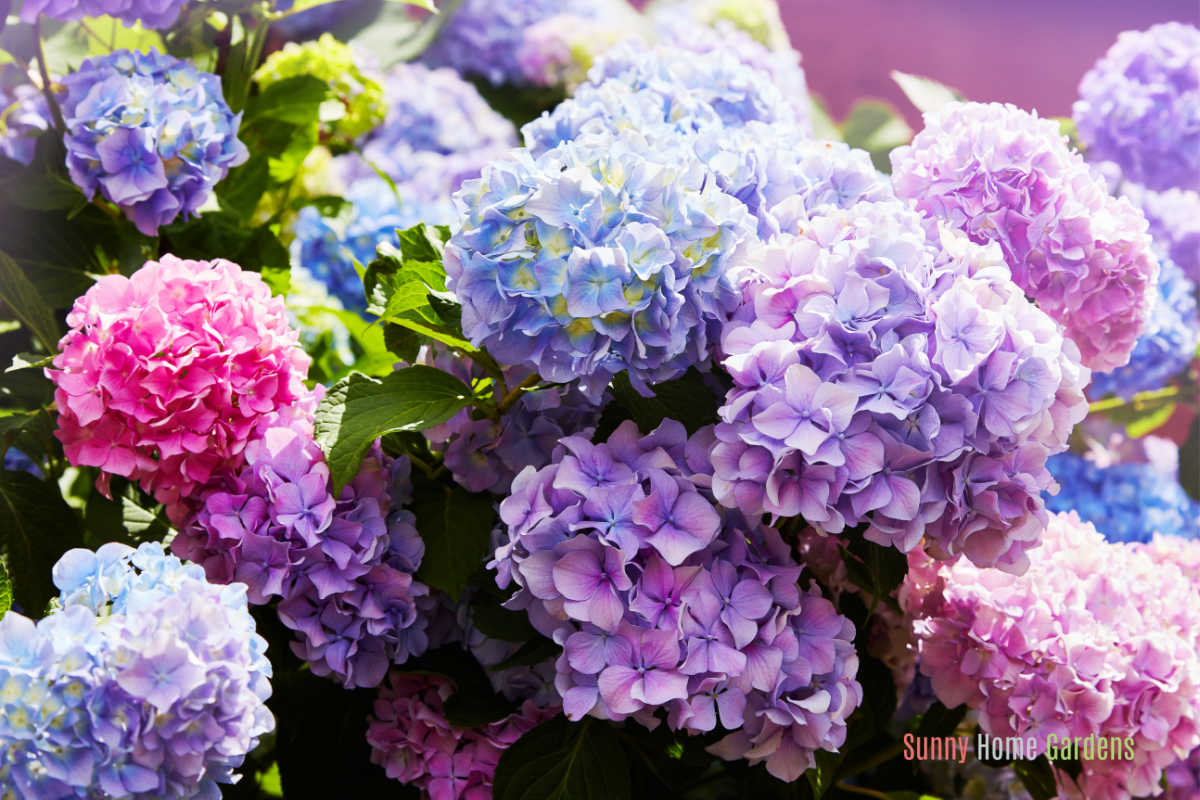
With their vibrant flowers, hydrangeas are an irresistible shrub for your landscape. Hydrangeas are prized for their long-lasting flowers that come in white, pink, blue, and purple shades.
Did you know you can transform the color of your hydrangea blooms?
By manipulating the soil pH level and using color-changing fertilizers, you can change the color of hydrangea flowers to pink or blue or even hues of purple.
Most types of hydrangeas contain a natural pigment called anthocyanin that reacts to the soil pH. In acidic soils with a pH below 6.0, anthocyanin takes up aluminum and makes hydrangeas turn blue.
In more alkaline soils with a pH above 6.0, aluminum uptake is blocked and the flowers turn pink, red, or remain white.
The ability to change color varies by hydrangea variety.
Bigleaf hydrangeas (Hydrangea macrophylla) and climbing hydrangeas (Hydrangea anomala subsp. petiolaris) are most responsive to color modifications.
Smooth hydrangeas (Hydrangea arborescens) and panicle hydrangeas (Hydrangea paniculata) are generally not affected by soil pH.
So if you crave to change your hydrangea to pink flowers or blue, read on to learn how to do this!
Table of Contents
How to Turn Hydrangeas Blue
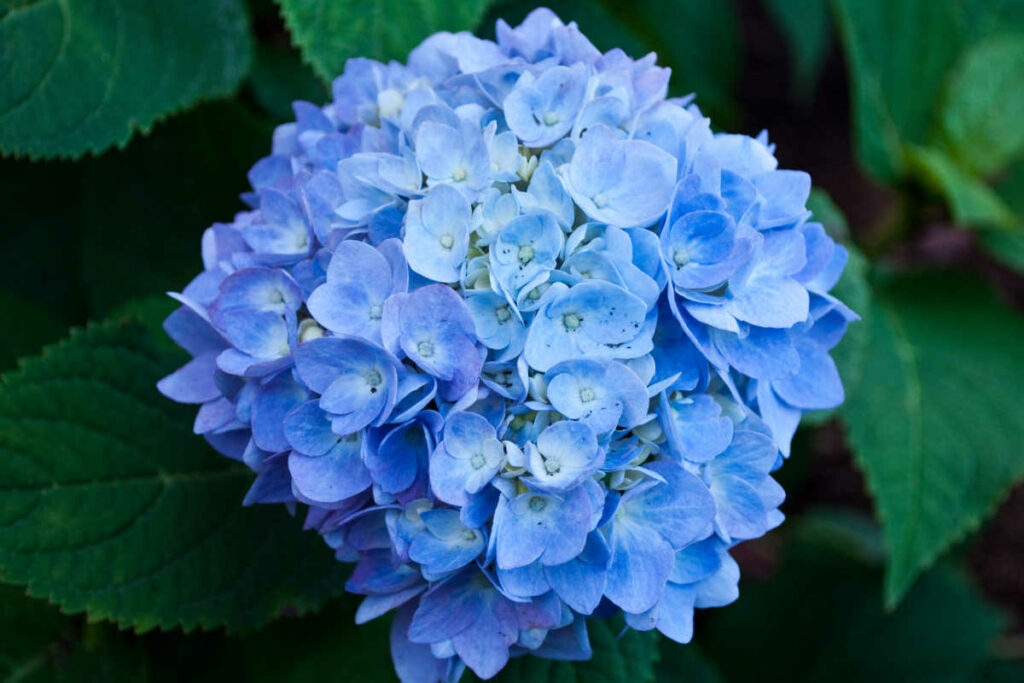
To produce blue flowers on varieties that allow color change, you’ll need to lower the pH of your soil into the acidic range below 6.0.
Here are some methods to help you achieve this:
- Work aluminum sulfate into the soil around your hydrangeas. This makes the soil more acidic to promote aluminum uptake.
- Incorporate organic materials like pine needles, oak leaves, or coffee grounds which release acids as they decompose.
- Use an acidifying fertilizer specifically formulated to turn hydrangeas blue. Look for products containing sulfur.
- Test the soil pH regularly and continue applying acidifying amendments. It may take a few seasons to reach optimal acidity.
- For potted plants, replace some of the soil with an acidic potting mix. Water with coffee to maintain acidity.
With properly acidic soil, spectacular blue blooms will soon appear!
How to Make Hydrangeas Pink
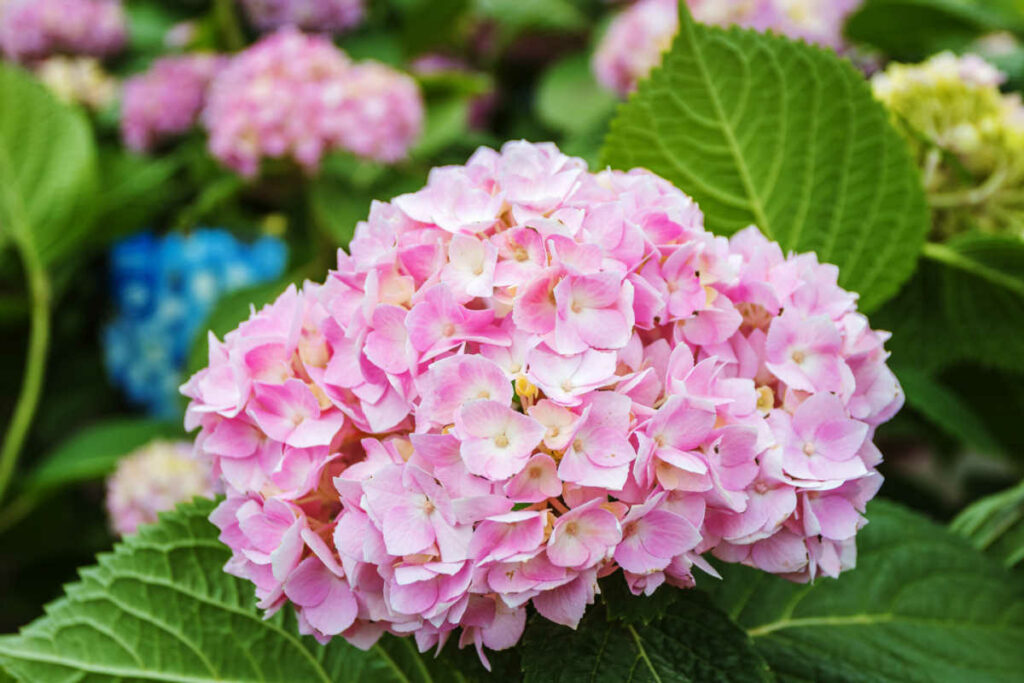
To prevent aluminum uptake and produce pretty pink hydrangea flowers, you need to raise the pH into the neutral to alkaline range above 6.0. Try these techniques:
- Work hydrated garden lime into the soil to increase alkalinity quickly. Wood ash also raises pH.
- Use bone meal or crushed eggshells when fertilizing. They slowly release calcium and alkalize the soil.
- Apply an alkaline fertilizer made specifically for pink hydrangeas. Look for calcium and magnesium.
- Test pH regularly and keep applying alkalizing amendments to maintain the higher pH range.
- For potted plants, mix some dolomitic lime into the soil. Water occasionally with baking soda water.
With a neutral to alkaline pH, your flowers will transform into stunning pink blooms!
Can You Change Hydrangea Color to Purple?
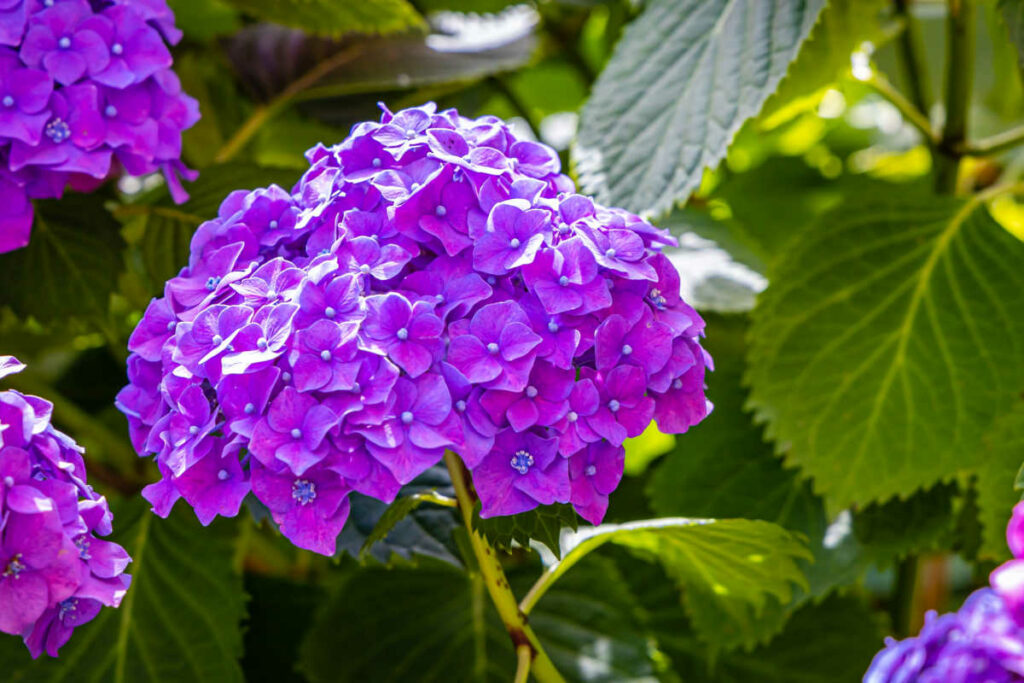
Many hydrangea lovers dream of growing hydrangeas with rich, vivid purple blooms. While most varieties are naturally pink or blue, it is possible to coax purple flowers from some hydrangeas.
Getting gorgeous purple hydrangea blooms requires creating just the right soil environment. Here are tips to shift flowers purple based on your starting soil pH:
If your soil pH is too high (above 6.0):
- Lower the pH by incorporating aluminum sulfate around plants – this provides aluminum and acidifies the soil over time.
- Work in acidic organic matter such as coffee grounds, pine needles or oak leaves. Allow it to break down and acidify the soil.
- Use an acidic fertilizer to increase aluminum availability. Look for sulfur in the ingredients.
- Monitor your pH and keep amending until you reach the target range of 5.0-5.5.
If your soil pH is too low (below 5.0):
- Raise the pH slightly by applying lime or crushed eggshells. These will raise the pH into the ideal purple range.
- Add bone meal when fertilizing, another amendment that adds calcium and alkalinity.
- Test the pH regularly and add small amounts of lime/eggshells until you inch up to the 5.0-5.5 range.
General tips:
- Growing in containers allows greater control over soil pH.
- Varieties like ‘Blushing Bride’ readily turn purple in acidic soil.
- Be very patient! It takes seasons to see the full color change.
With the right amendments and persistence, you can modify your soil to achieve stunning purple hydrangea blooms. Pay close attention to your starting pH and adjust accordingly.
How Long Does it Take Hydrangeas to Change Color?
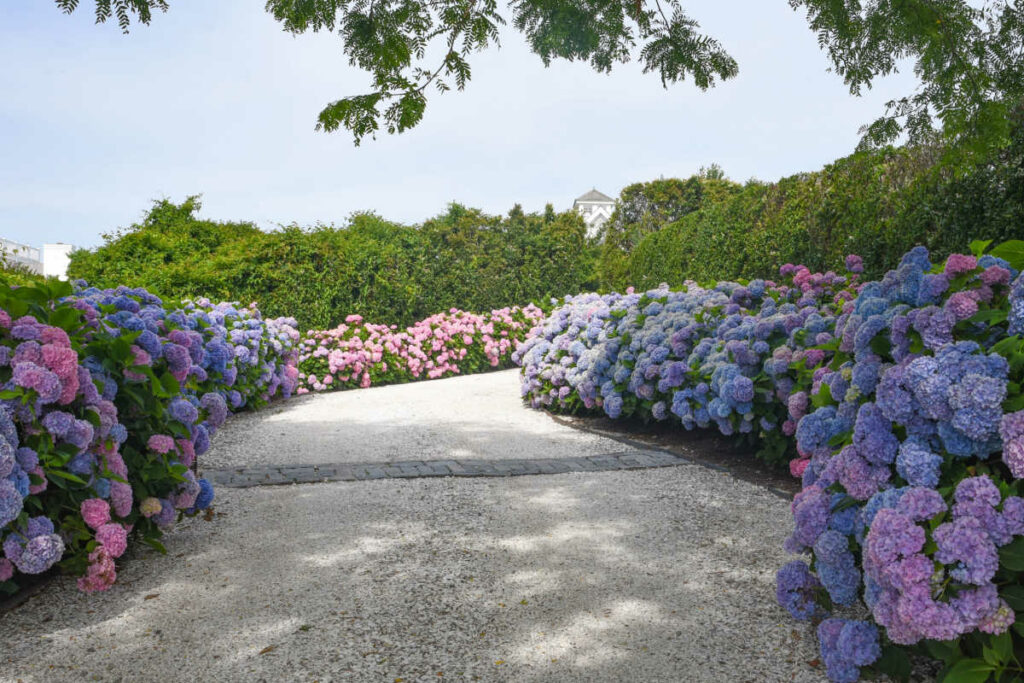
Be patient, as it can take time for hydrangea flowers to shift from one color to another.
- Expect the color change to occur gradually over one to two years. It may require multiple seasons of soil amendments.
- Flowers already emerging for the current bloom period generally won’t adjust their color. You must alter the soil early.
- Some hydrangea varieties have limited ability to modify their hue no matter the pH. Check if a variety is pH-adjustable when purchasing.
- For potted plants, color change occurs more quickly since you can fully replace soil. But still allow a full season or two.
Don’t give up too soon! With persistent soil amendments each spring and fall, you’ll eventually get that color you crave.
Final Thoughts
To recap, you can alter hydrangea flower color through these key methods:
- Lower pH for blue by using aluminum sulfate, sulfur, coffee grounds, and acidic fertilizers
- Raise pH for pink or red with lime, wood ash, bone meal, crushed eggshells, and alkaline fertilizers
- Get purple by getting your soil pH between 5.0-5.5.
With the right hydrangea variety, proper soil amendments, persistent pH adjustments, and color-changing fertilizers, you can gain gorgeous control over your hydrangea hues. Shift your blooms from serene blues to vibrant purples and everything in between for phenomenal floral displays.




